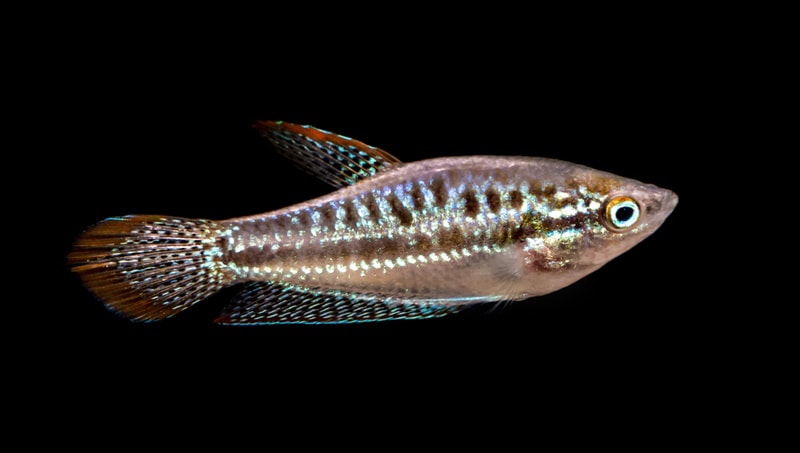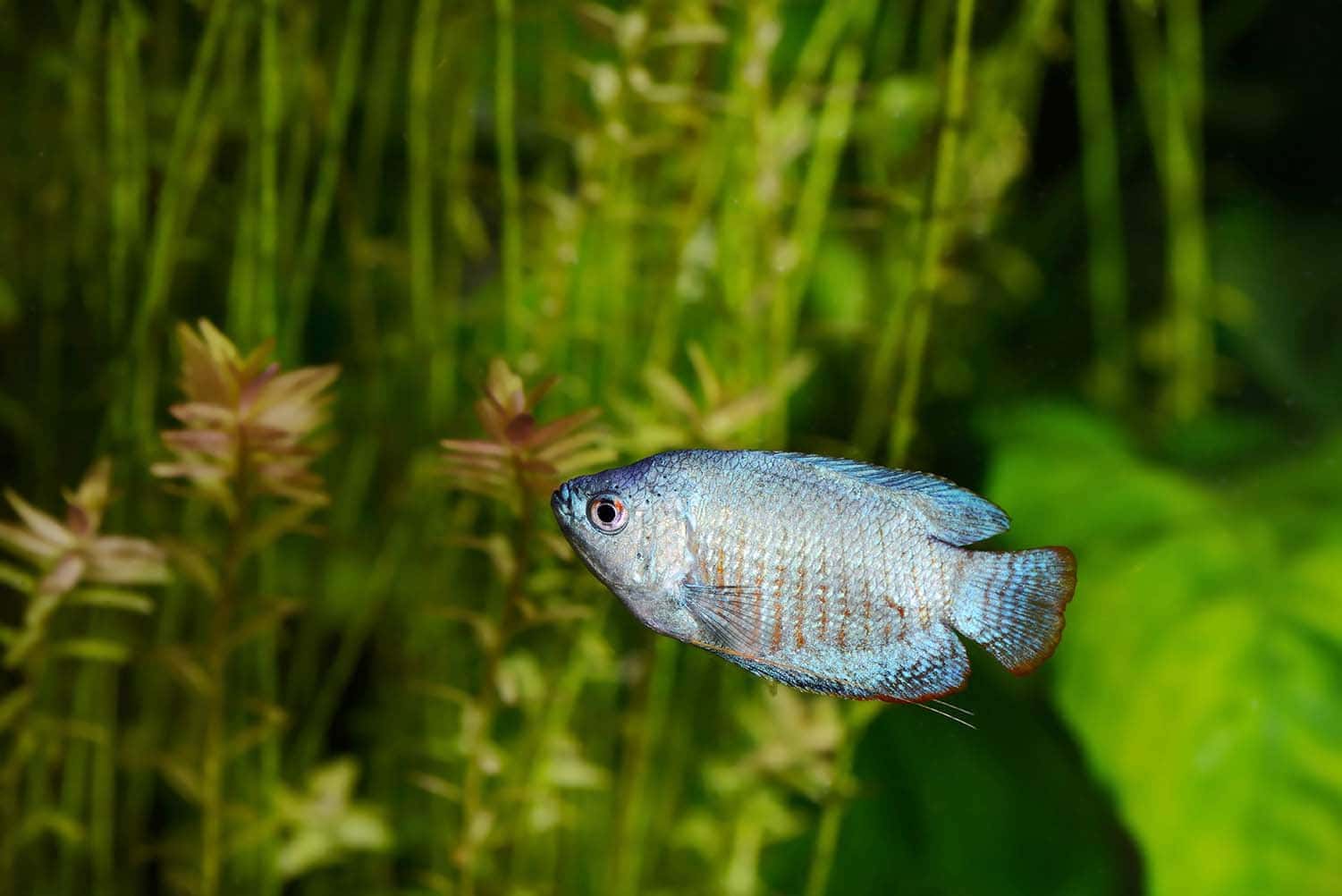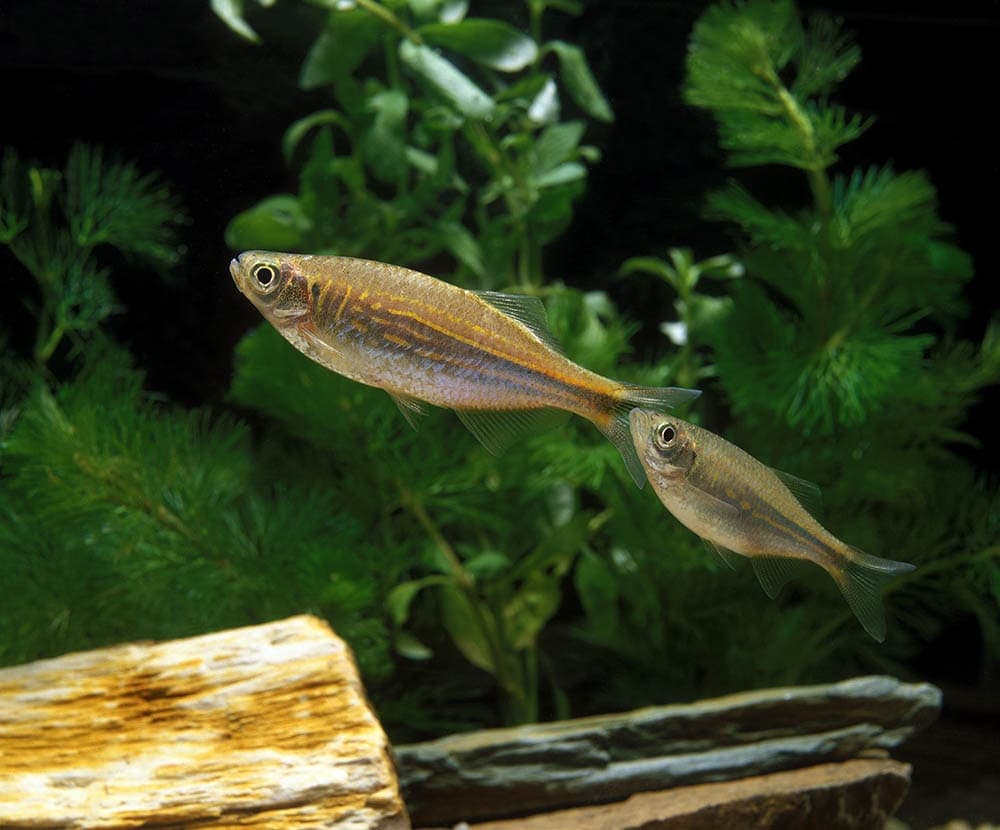How Fast Do Koi Fish Grow? Growth Chart & Infographic

Updated on
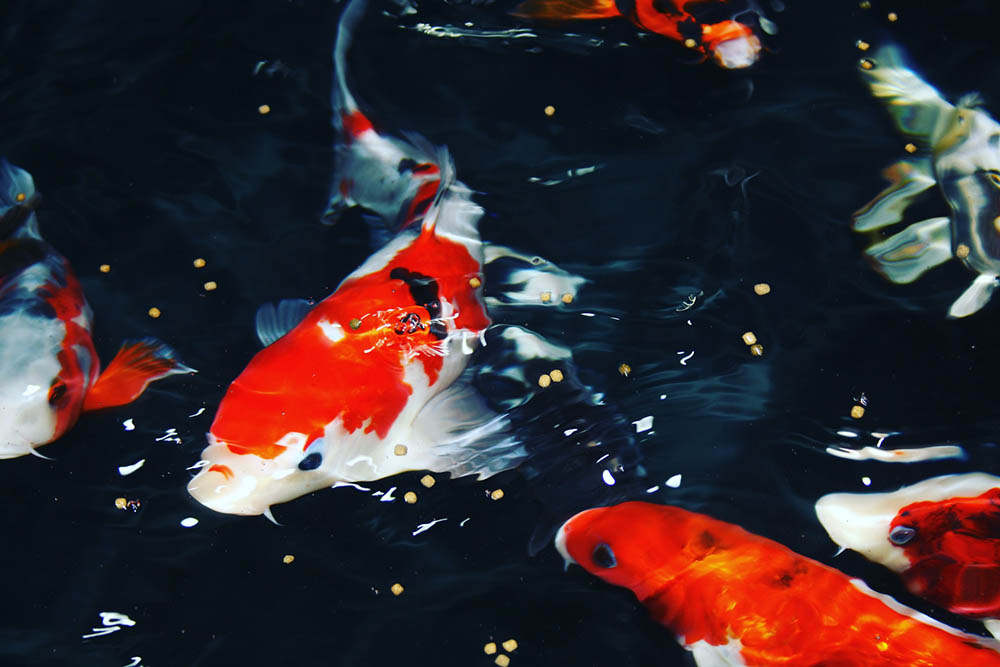
Click to Skip Ahead
Koi fish are popular ornamental freshwater fish that are typically kept in ornamental ponds. They were initially taken care of by rice farmers in early 19th-century Japan and are colorful versions of the common carp, but they aren’t common! The word “Koi” actually translates to “love” or “affection” in Japanese. If you’re considering purchasing or have recently purchased a Koi, and you’re wondering how big they get, you’ve come to the right place. We’ll review the sizes you can expect and other pertinent information, such as factors that can affect your Koi’s growth.
How Big Will My Koi Fish Grow?
The average Koi fish, when fully mature, can measure up to 3 feet (36 inches) long and can weigh 22 to 26 pounds! That is not to say that every Koi fish will end up that large, but several factors might influence how large your Koi will become. Domestic Koi kept in an aquarium might only grow around 12 to 15 inches, and traditional Japanese Koi can grow up to 26 inches.
These sizes depend on the type of Koi fish that you have. There are over 100 kinds of Koi that all come in various sizes. The size of a mature Koi is typically dependent on the species more than on their environment, but the environment will still impact the Koi’s growth rate.
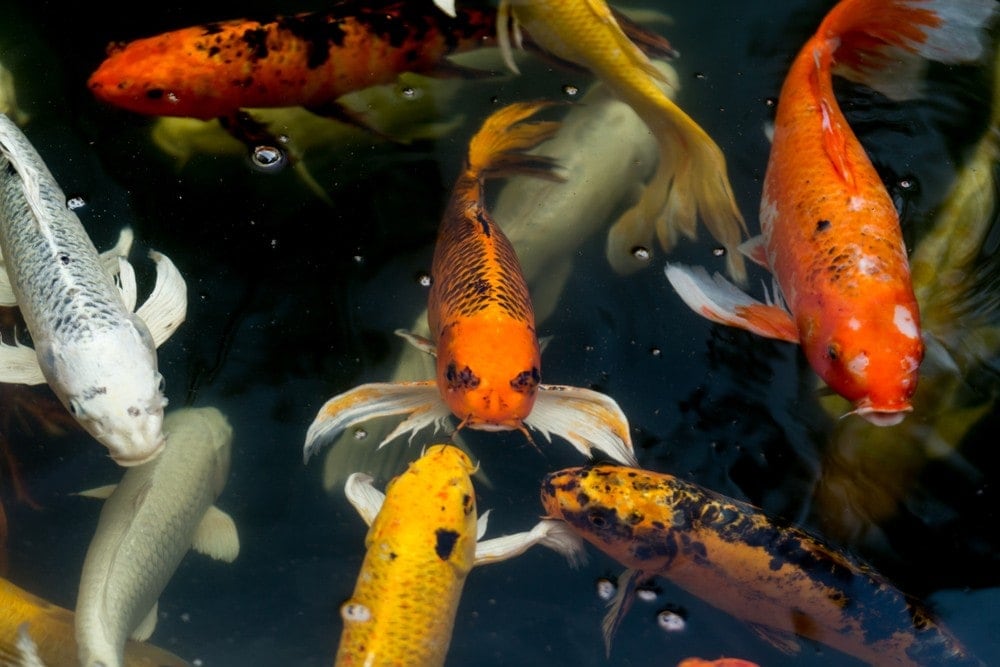
Koi Fish Growth Chart
This chart is based on the growth rate of the average Koi, so not every fish will be the exact size you see here. This is just to give you a rough idea of what you might expect as your Koi matures.
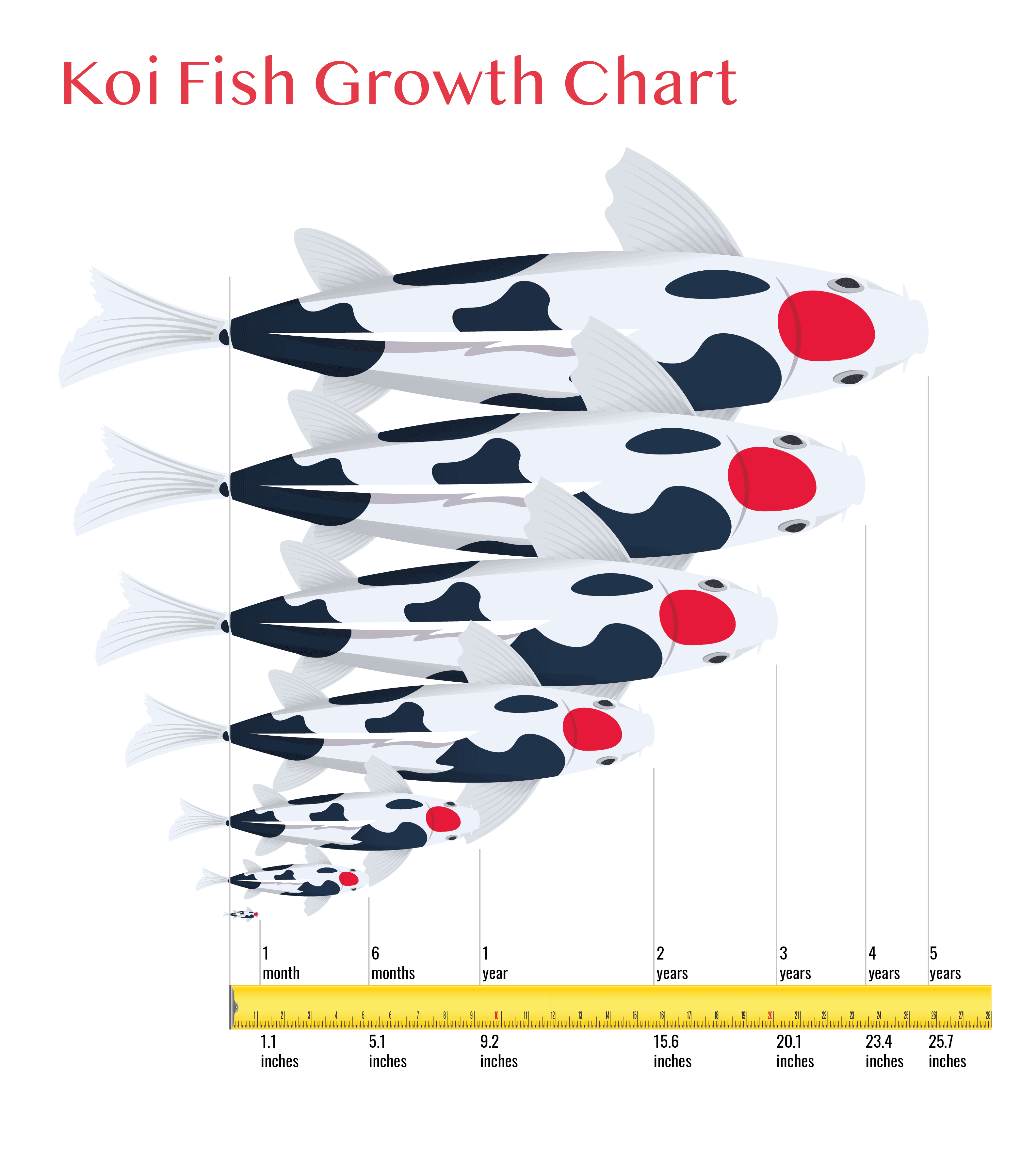
| Age | Koi Fish Size |
| 1 month | 1.1 inches |
| 6 months | 5.1 inches |
| 12 months | 9.2 inches |
| 18 months | 12.6 inches |
| 2 years | 15.6 inches |
| 2.5 years | 18 inches |
| 3 years | 20.1 inches |
| 3.5 years | 21.6 inches |
| 4 years | 23.4 inches |
| 4.5 years | 24.6 inches |
| 5 years | 25.7 inches |
| 5.5 years | 26.6 inches |
| 6 years | 27.3 inches |
| 6.5 years | 28 inches |
| 7 years | 28.5 inches |
Source: http://www.bycaitlin.com/Koi Fish-and-koi.html
How Fast Do Baby Koi Fish Grow?
The size and colors of each baby Koi will depend on the kind of Koi you have. Like the previous chart, this is an average idea of what you can expect from your Koi as it matures, but the numbers won’t fit every fish exactly.
Weeks 1–6
On average, a baby Koi grows approximately .03 inches (.071 cm) every day until it is about 6 months of age. So, your Koi by Week 1 will be about .20 inches (.5 cm), and by 6 weeks, it could be 1.2 inches (3 cm).
The baby Koi might be brown at this age or the orange or red that we typically see in the adult, but the colors won’t be as bright as they will be when it matures. They could also be white, yellow, black, or gray.
Months 2–6
By 2 months, the baby Koi will be about 1.6 inches (4 cm), and by 6 months, the Koi could be as much as 5.1 inches (13 cm). The Koi’s coloring should continue to develop at this time. You might find that the color changes, deepens, and becomes more noticeable.
Months 7–11
When the Koi reaches 6 months, the growth rate starts to slow down to 0.2 inches (.06 cm) every day until their second year. By the 7th month, the Koi will be about 5.8 inches (15 cm) and continue to grow at roughly the same rate. The colors of the Koi will change and grow brighter and deepen as it continues to mature.
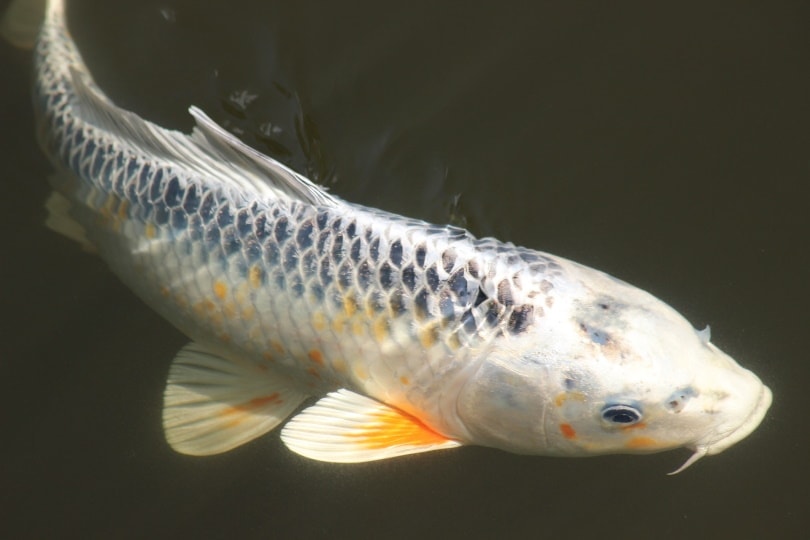
1 Year
By the time your Koi is 12 months old, they could be around 9.2 inches (23 cm), but again, they could be smaller or larger, depending on the species and your Koi’s environment. The growth is about .21 inches (0.5 cm) per day into their second year.
2 Years
When your Koi reaches their second year, it will be about 15.6 inches (40 cm). The daily growth rate will continue to decrease as they continue to age. By its second year, the Koi’s coloring is typically at its peak.
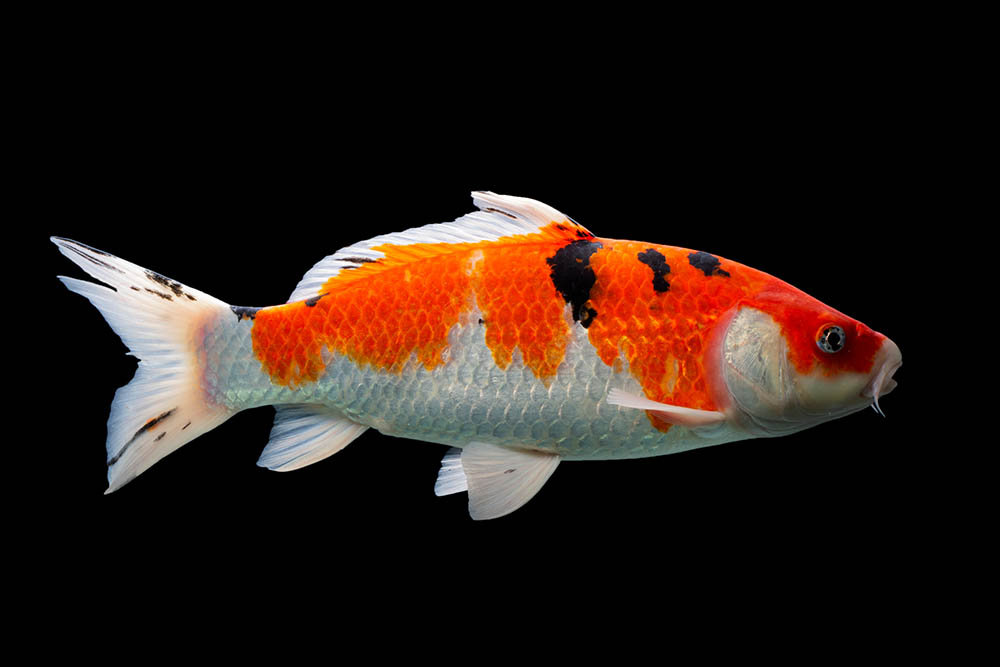
3 Years
Some Koi are already at their adult size, between 15 and 16 inches, but others could reach 20 inches or more by the time they are 3 years old. It takes the Koi about 3 years to become a fully mature adult.
How to Avoid Stunting Your Koi Fish
There are a few factors that can stunt your Koi’s growth. Interestingly, stunted fish tend to live longer, but it’s up to the fish keeper if they want to actively stunt their Koi’s growth or make their fish as comfortable as possible throughout its life. Stunting typically occurs partly due to stress or illness, which can develop under the following conditions.
Tank/Pond Size
The general rule is that each adult Koi needs a minimum of 250 gallons for each fish. If you have a female capable of spawning, you’re looking at 500 gallons for each female. But bigger is always better.
However, it’s highly recommended that you don’t confine Koi to a tank, but rather give them a home in a pond. The pond should be at least 1,000 gallons and 3 feet deep.
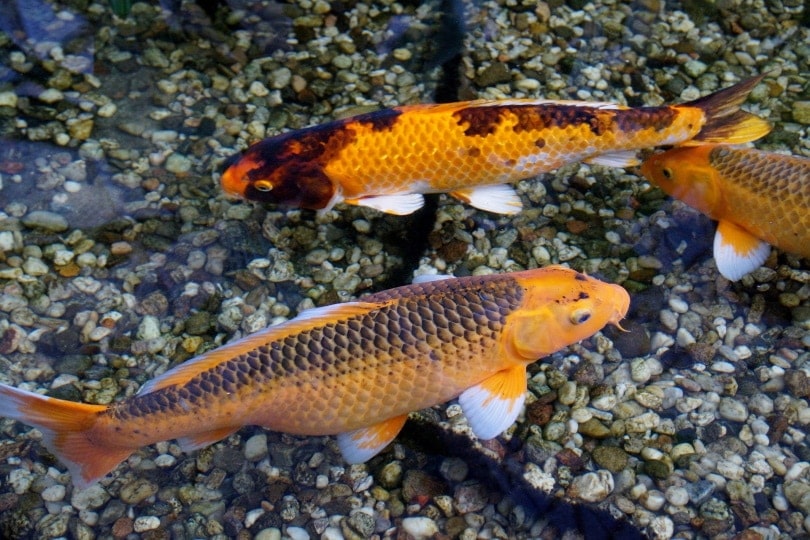
Overcrowding
An overcrowded tank will undoubtedly stunt your Koi’s growth. If you have a pond that only holds 1,000 gallons, you should only have about three or four medium-sized Koi or two large Koi in total. The more Koi there are in a confined space, the more the water quality will suffer, and your Koi will become stressed.
Temperature
The temperature should be about 60°F to 75°F. While Koi can handle temperatures below and above this range, the water quality can deteriorate outside of their preferred temperature.
Diet
A Koi will thrive with a good diet. You should store the food properly and throw away any leftovers after 6 months of being opened, regardless of the date on the package. Pellets that are high in protein and contain enough vitamins and minerals are what you should invest in. What and how much you feed your Koi will contribute to their growth rate.
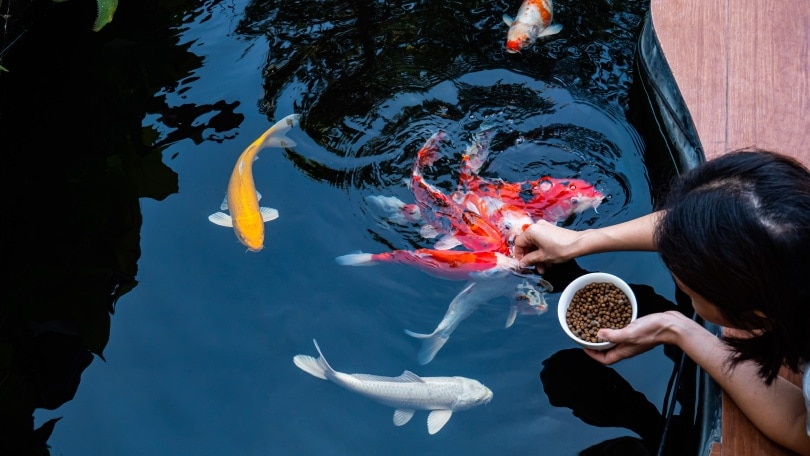
Water Quality
- The optimum pH levels are about 7.0 to 8.5.
- Ammonia levels should be 0 (you don’t want to see levels of 0.25; any higher, and you’re risking your Koi’s life).
- Nitrates should be at about 20 to 60 ppm.
- Nitrites can be less than 0.25 ppm but really should be at 0.
How to Make My Koi Fish Grow Faster
As long as you follow the suggested conditions listed in the previous section, your Koi will thrive and grow much bigger, much faster! Their environment must be large and warm, with the right pH, nitrite, and nitrate levels, and be well-maintained. As your young Koi grows, particularly if you have it housed in a tank, they must be moved to larger living quarters, whether a larger tank or a pond.
Feed them a high-quality diet of pellets, bloodworms, brine shrimp, and a few vegetables. Remember, your Koi will only grow as large as their genetics allow.
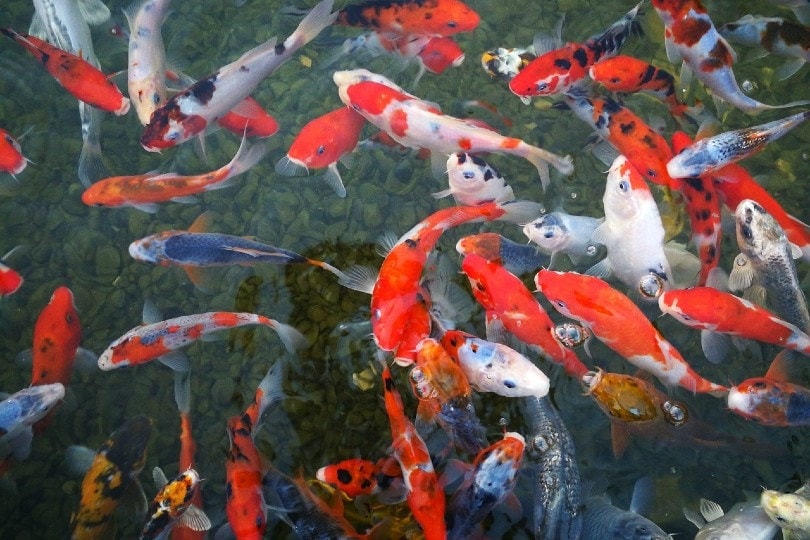
How Big Do Outdoor Koi Fish Grow?
It’s quite possible for your Koi to grow large and rather quickly in a pond. However, if you have a small pond, they could still suffer from stunted growth, particularly if the water quality isn’t what it should be. The pond should be heated (especially for colder weather), and you still need to give them a high-quality diet; these factors will always be part of what contributes to a healthy and potentially large Koi.
Final Thoughts
It’s great that you’re taking the time to determine how large your Koi will grow; it can help you figure out how to set up their habitat. In addition to the koi’s diet and water conditions, the species is a crucial factor that will determine the size of your pet. We hope that our article has helped answer a few of the questions that you may have regarding your Koi’s growth. Enjoy your time raising these beautiful fish!
Featured Image Credit: Just Koi, Unsplash


